




Did you find this useful? Give us your feedback




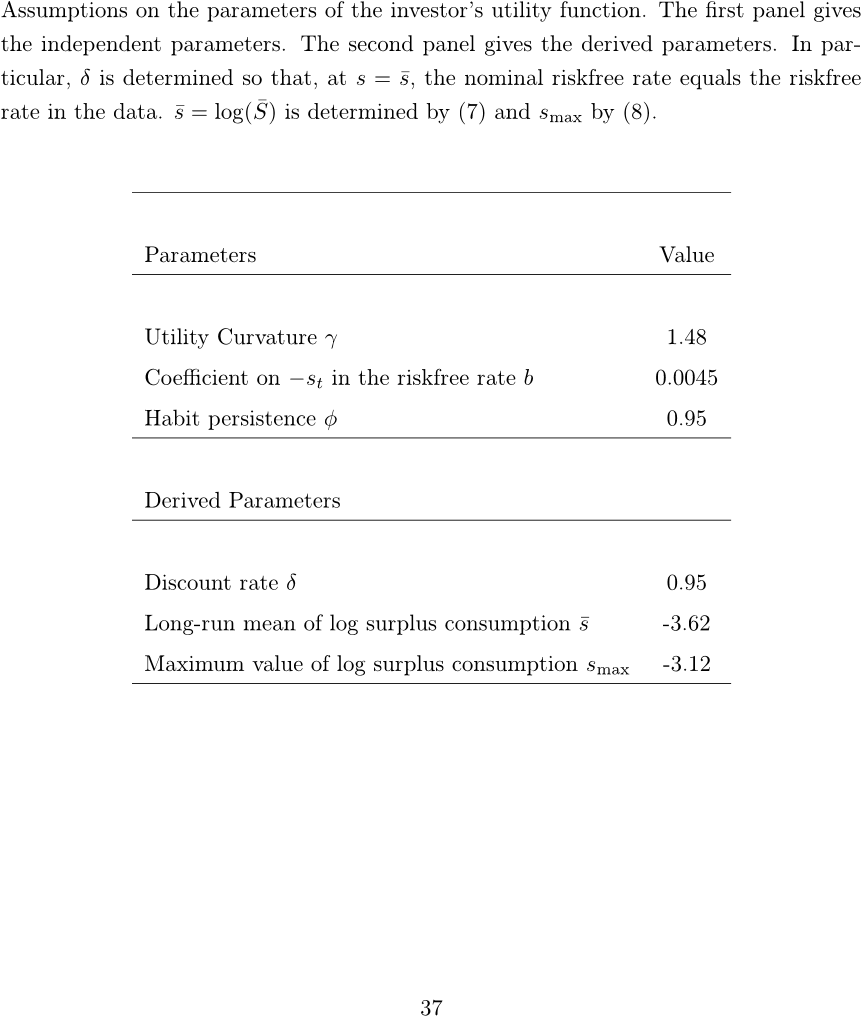
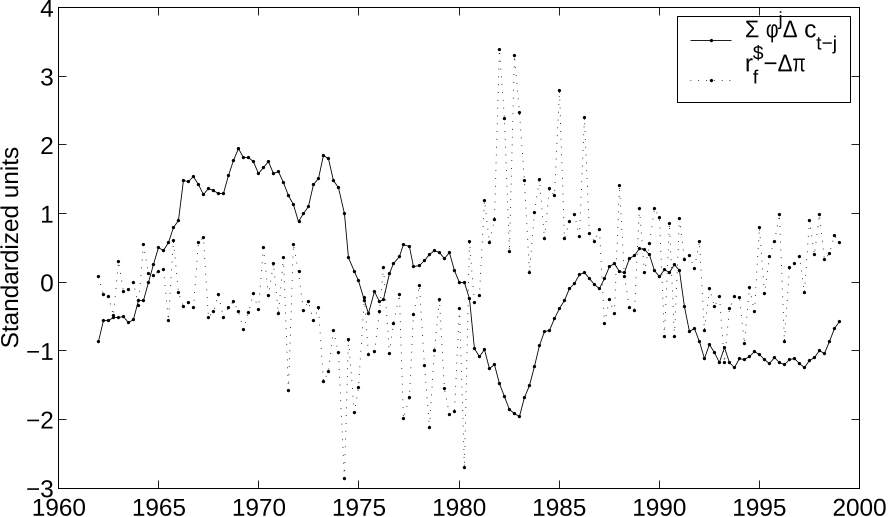

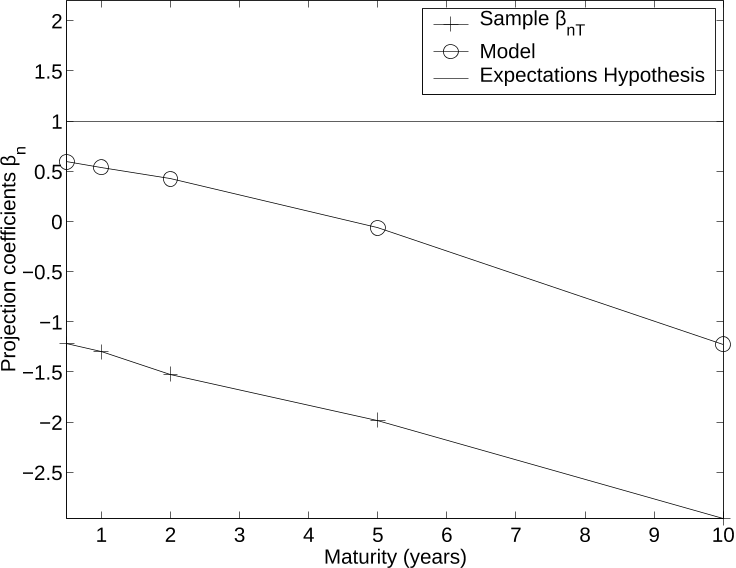
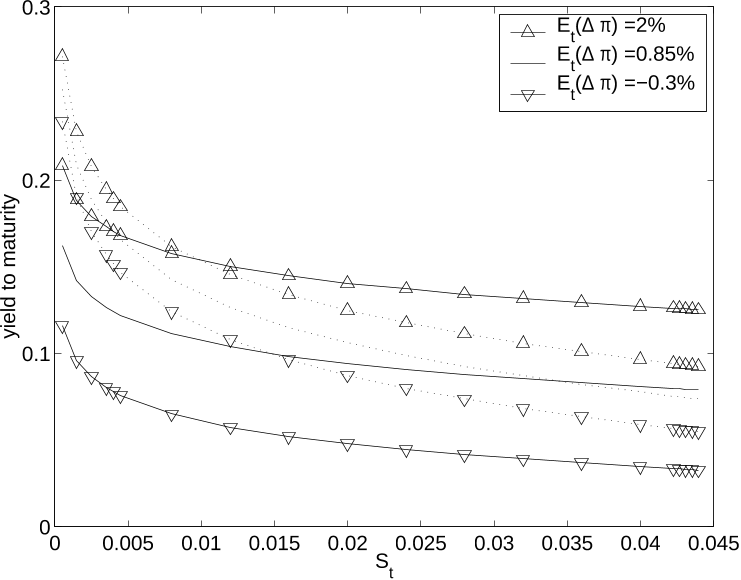

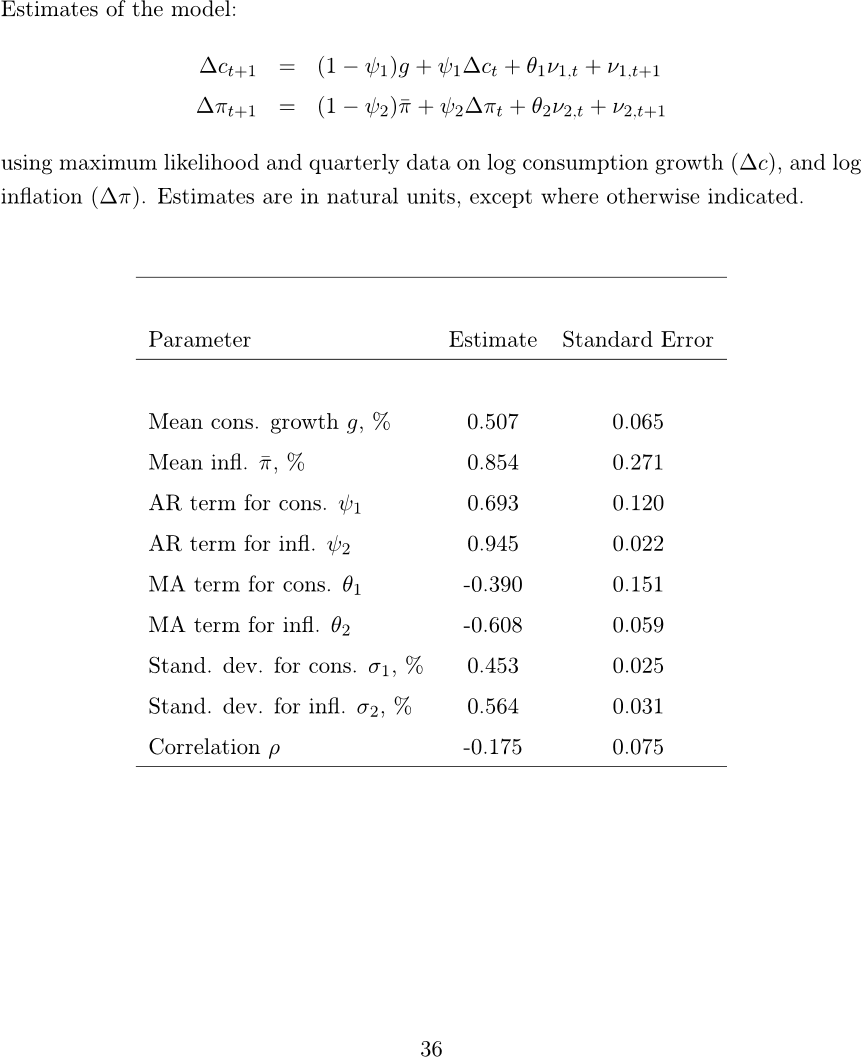
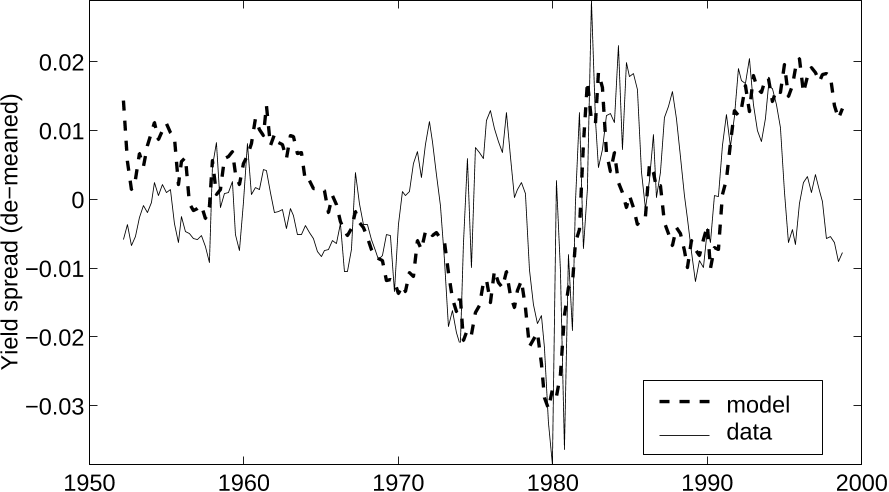
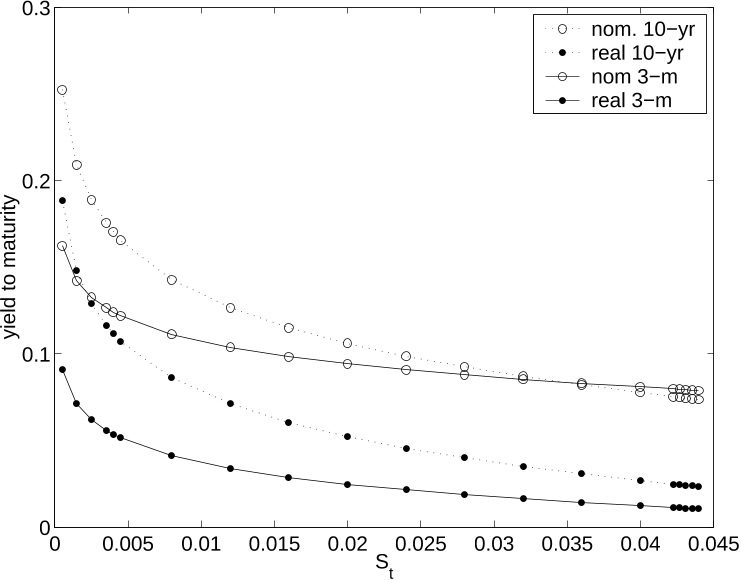





2 citations
2 citations
2 citations
1 citations
...Negative correlations of consumption growth with realizedl and expected inflation growth are the key channel through which equilibrium models generate a positive slope of the term structure of nominal interest rates (e.g., Piazzesi and Schneider, 2006; Wachter, 2006)....
[...]
...The parameters of the proposed model are calibrated by matching the stochastic discount factor of the proposed model with that exogenously specified by Lettau and Wachter (LW) (2011). This calibration approach allows the proposed model to have a similar descriptive ability to the LW model, and the LW model to have an equilibrium foundation....
[...]
...…between ∆πt and xπ,t. Negative correlations of consumption growth with realizedl and expected inflation growth are the key channel through which equilibrium models generate a positive slope of the term structure of nominal interest rates (e.g., Piazzesi and Schneider, 2006; Wachter, 2006)....
[...]
...Note that the correlation between ∆ct and realized inflation growth ∆πt is the same as ρcx2 due to the perfect correlation between ∆πt and xπ,t. Negative correlations of consumption growth with realizedl and expected inflation growth are the key channel through which equilibrium models generate a positive slope of the term structure of nominal interest rates (e.g., Piazzesi and Schneider, 2006; Wachter, 2006)....
[...]
1 citations
...Wachter (2006) applied the Campbell and Cochrane (1999) model to access its term structure implications....
[...]
10,019 citations
...In addition, results available from the author show that price–dividend ratios have the ability to predict excess returns on equities, just as in the data (Campbell and Shiller, 1988; Fama and French, 1989), and that declines in the price–dividend ratio predict higher volatility (Black, 1976; Schwert, 1989; Nelson, 1991)....
[...]
...…from the author show that price–dividend ratios have the ability to predict excess returns on equities, just as in the data (Campbell and Shiller, 1988; Fama and French, 1989), and that declines in the price–dividend ratio predict higher volatility (Black, 1976; Schwert, 1989; Nelson, 1991)....
[...]
7,014 citations
6,141 citations
...Thus, the model can fit the equity premium puzzle of Mehra and Prescott (1985)....
[...]
4,110 citations
...In addition, results available from the author show that price–dividend ratios have the ability to predict excess returns on equities, just as in the data (Campbell and Shiller, 1988; Fama and French, 1989), and that declines in the price–dividend ratio predict higher volatility (Black, 1976; Schwert, 1989; Nelson, 1991)....
[...]
...…from the author show that price–dividend ratios have the ability to predict excess returns on equities, just as in the data (Campbell and Shiller, 1988; Fama and French, 1989), and that declines in the price–dividend ratio predict higher volatility (Black, 1976; Schwert, 1989; Nelson, 1991)....
[...]
3,886 citations